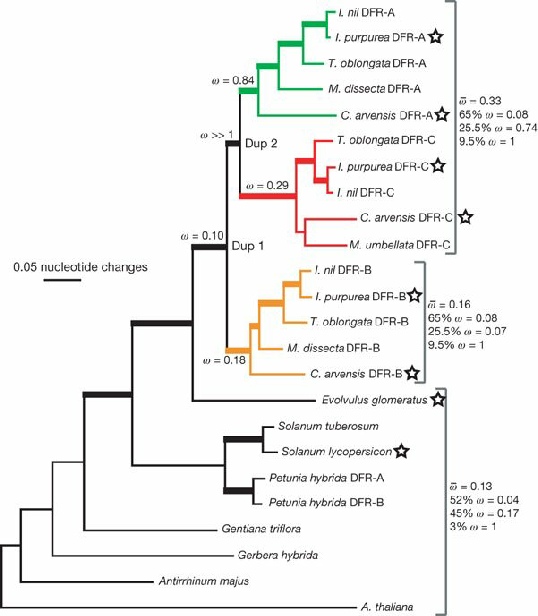






Gene duplication is often associated with the evolution of novel function in one of the duplicated copies. There are several models that account for the evolution of novel function that differ in the timing of duplication and acquisition of novel function. Although these different models have important implications for the likelihood of copies persisting long enough to evolve different functions, there is currently little empirical evidence that permits distinguishing among these models.
We are currently using the evolution of novel defensive function in a duplicate copy of threonine deaminase in the Solanaceae to distinguish among these models. For more information on this topic, see the following publication:
Des Marais, D. L., and M. D. Rausher. 2008. Escape from adaptive conflict after duplication in an anthocyanin pathway gene. Nature 454: 762-
Rausher, M. D., and J. Huang. 2015. Prolonged adaptive evolution of a defensive gene in
the Solanaceae. Molecular Biology and Evolution 32: 347-


Gene duplication in dihydroflavonol reductase (DFR) in the family Convolvulaceae. Figure shows repeated positiive selection on the lineage leading to copies A and c reflecting evolution of a novel function.
